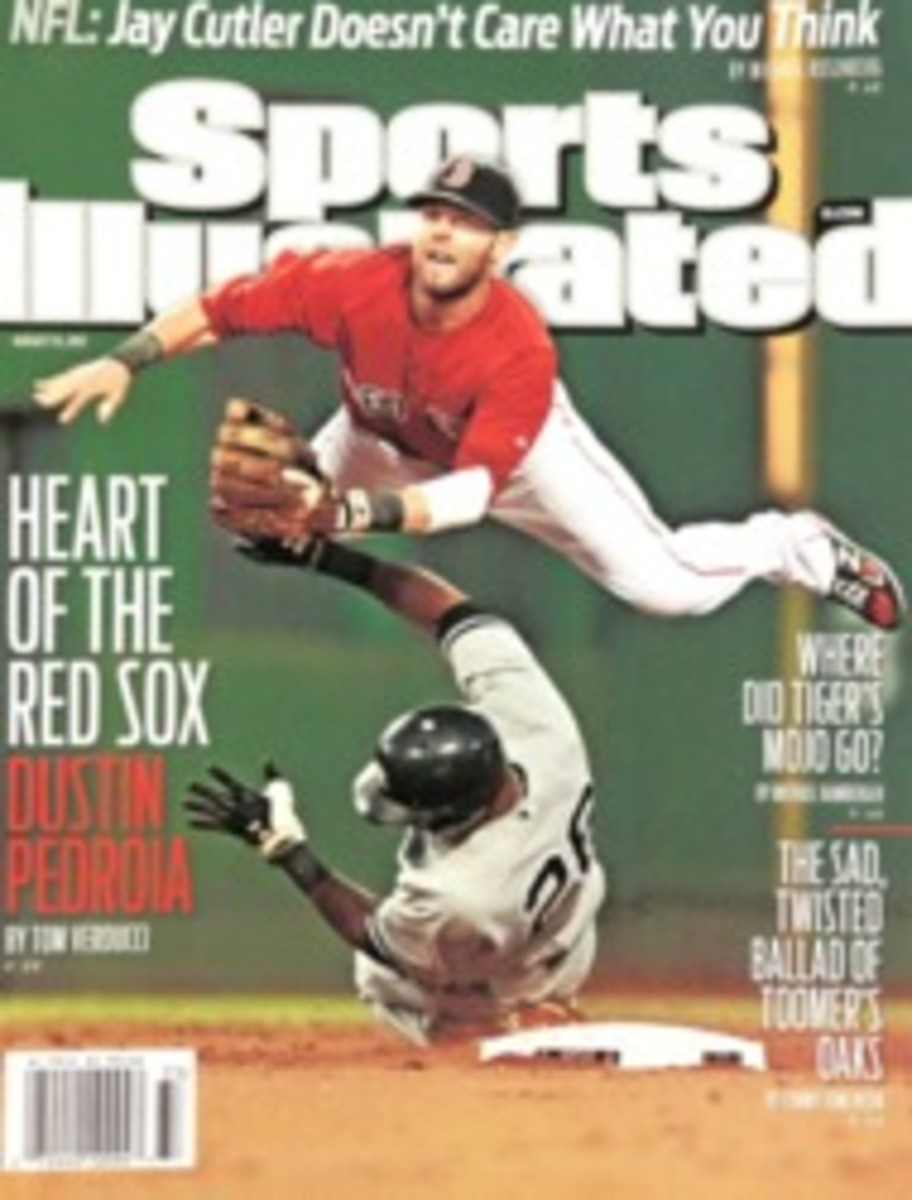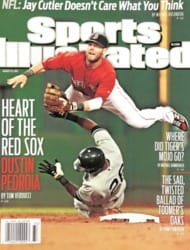
Dangerous Minds
The names couldn't appear more disconnected. Until recently, after all, why would anyone have mentioned Tom Cavanagh, a former Sharks center; Dave Duerson, an erstwhile Pro Bowl safety with the Bears; Claudia Heill, an Austrian Olympic judoka; Thomas Emma, a onetime Duke basketball captain; Hideki Irabu, an ex--Yankees pitcher from Okinawa; and Speedy Peterson, a Boise-born Olympic aerial skier, in the same sentence?
But then on Jan. 6, the 28-year-old Cavanagh, a Harvard alum, was found dead, having leaped to his death inside a Rhode Island parking garage. The next month, on Feb. 17, Duerson died at his South Florida home at age 50 from a self-inflicted shotgun blast through his chest. Six weeks after that, the 29-year-old Heill jumped to her death from a sixth-floor window in Vienna. Two months later, on June 7, Emma, 49, died after throwing himself off the roof of the New York Athletic Club. And late last month the 42-year-old Irabu was found, having hung himself, in his Rancho Palos Verdes, Calif., home in the same week that Peterson, 29, shot himself in the head in Utah's Lambs Canyon.
By any measure, in any industry, this was too much death. Certain cases perhaps were foreseeable. Peterson, for instance, had spoken publicly last year about a previous suicide attempt. Others were less predictable. Though Cavanagh's father, Joseph, would tell of his son's struggle against "the demons of mental illness for many years," news of Tom's death stunned his teammates and close friends alike.
What every one of these tragedies ought to be, however, is categorical—a screaming wake-up call to a culture that has only begun to heed a lifetime of alarms. "These cases remind you that no one is immune, that a sound body does not mean a Teflon mind," says Antonia L. Baum, vice president of the International Society for Sports Psychiatry. "And that when it comes to the stigma around psychiatric illness, the athletic arena remains one of its biggest fortresses."
For decades, sport's prevailing attitude toward mental health approximated that of a playground bully's. The very notion of an emotional disorder was so radioactive that paranoid pro teams often required counselors—hired on an ad hoc basis, if at all—to hide themselves by checking into separate hotels from the players whom they were hired to help. Alcohol was the preferred locker room prescription for a player grappling with symptoms of anxiety or depression. As Hall of Fame quarterback Terry Bradshaw, who suffered from clinical depression himself, once put it, "There's something about depression that seems to say, 'I'm a tremendous failure' or 'I'm the biggest wuss there is.'"
Yet heading into 2011, the fortress appeared to be giving way. In '06 eventual Cy Young winner Zack Greinke's stint on the disabled list for social-anxiety disorder and depression—and his subsequent regimen of therapy and antidepressants—had helped nudge baseball toward a new vanguard of understanding (SI, June 21, 2010). Since April '09 at least nine MLB players—most recently Mets pitcher Taylor Buchholz, who went on the DL with a shoulder injury and remains there due to depression and anxiety disorder—have acknowledged suffering from a mental illness. Perhaps most famously, in June '10, Lakers forward Ron Artest grinned into ABC cameras after winning the NBA title and gave a shout-out to his Houston-based psychiatrist, Santhi Periasamy. ("She really helped me relax a lot," Artest gushed.) And two Sundays ago, Dolphins receiver Brandon Marshall, long branded a malcontent, announced—not admitted, as it once might have been reported—that he'd been diagnosed this off-season with borderline personality disorder at Boston's McLean Hospital, a facility recommended by former Miami teammate Ricky Williams, who was himself diagnosed with social-anxiety disorder in '01. "I'll be the face of BPD," said Marshall, who also pledged to release a documentary about his treatment. "I'll make myself vulnerable if it saves someone's life, because I know what I went through this summer helped save mine."
The problem is that so much publicized, admirable progress ultimately ranks more as a drop in the bucket than a splash. If nothing else, this year's series of suicides should force us to remember precisely how little has been done to address mental health in sports overall. While MLB has taken the lead in finally framing emotional disorders as injuries, psychologists and psychiatrists in every sport, baseball included, still say that teams too often use such professionals as unintegrated entities, stationed apart from the normal doctors and trainers. Meanwhile, young athletes nationwide go unscreened for mental illness during routine physicals, and countless at-risk individuals who could be educated or treated keep slipping through the cracks. "We are far, far away from where we need to be," says psychiatrist David R. McDuff, a former Army doctor who has engineered cutting-edge mental health programs for the Ravens and the Orioles. "We're in the first decade of a six-decade process."
At least the process continues. For Marshall, reality became clear 11 months ago: On Sept. 20, Broncos wideout Kenny McKinley—a former teammate whom Marshall lovingly called his "younger brother"—was discovered at his home in Centennial, Colo., dead at age 23 from a self-inflicted gunshot to the head. McKinley, too, seemed to have had little in common with Cavanagh, Duerson, Heill, Emma, Irabu or Peterson. These were athletes of different races, different faiths, different ages, different troubles. But if that old fortress is to one day crumble, it must be remembered how they are united now.
"I'll be the face of BPD," says Marshall. "I'LL MAKE MYSELF VULNERABLE if it saves someone's life."
ILLUSTRATION
ILLUSTRATION BY DARROW

